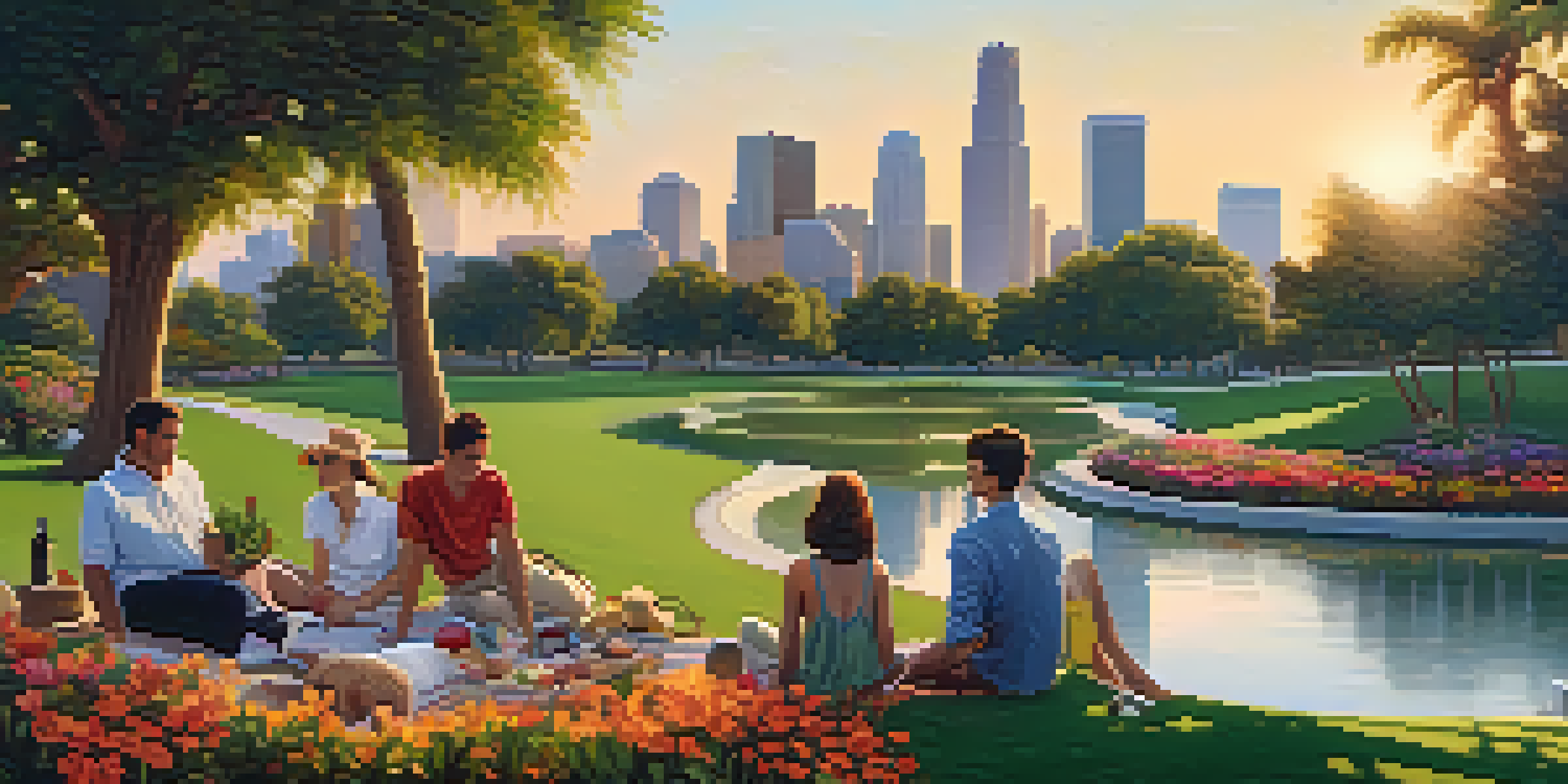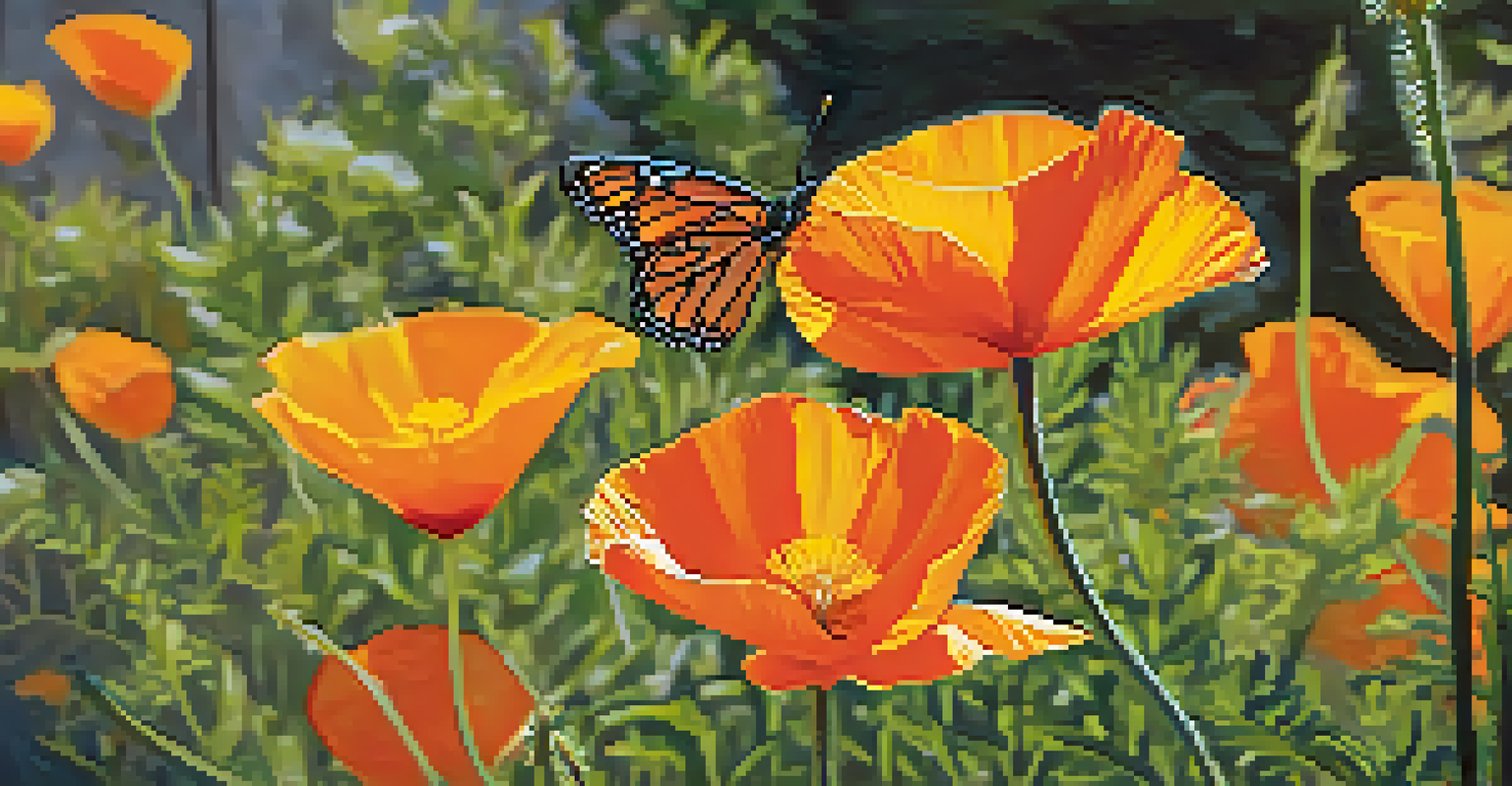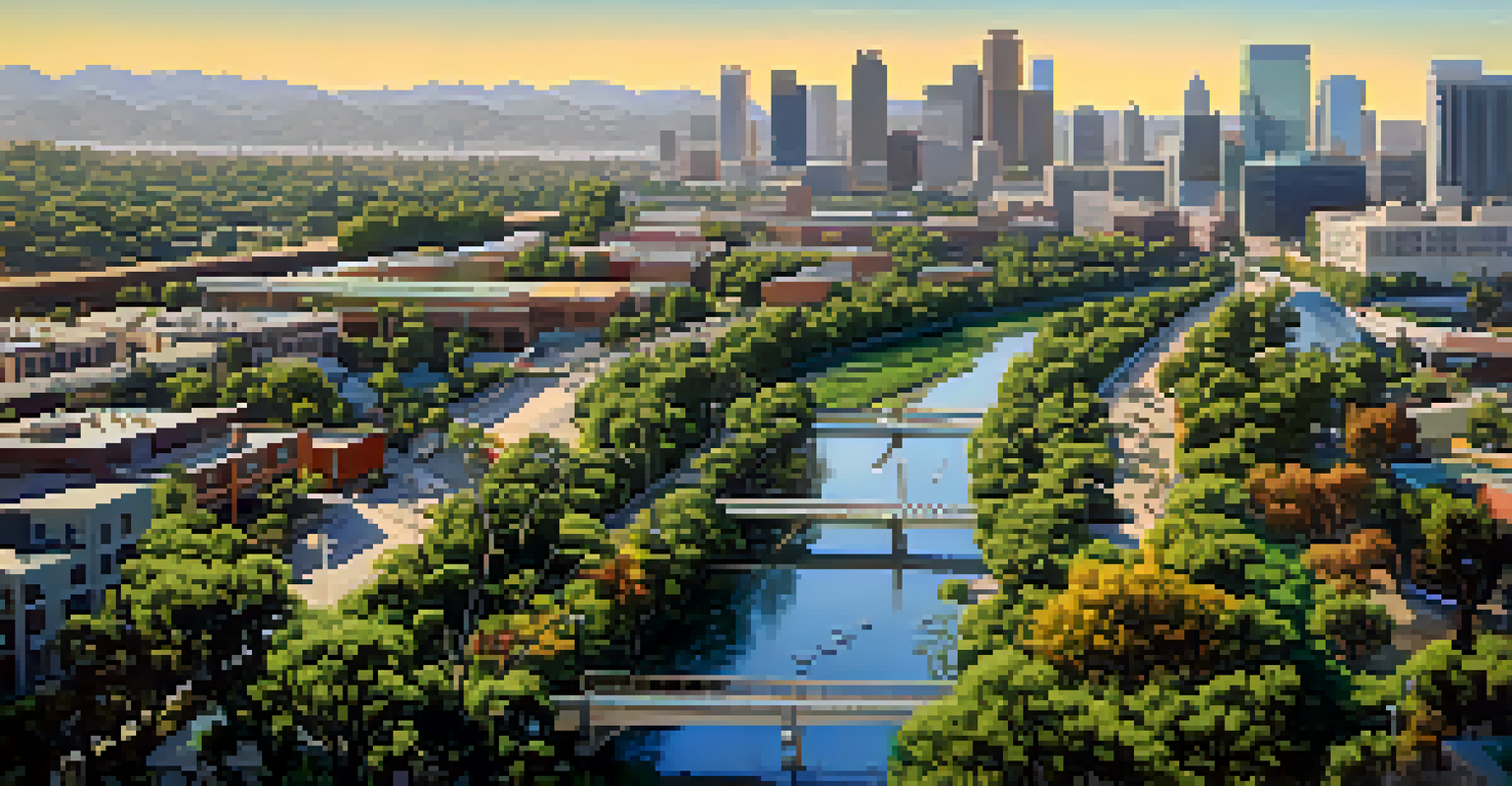Exploring the Role of Urban Green Spaces in LA's Wildlife

Understanding Urban Green Spaces in Los Angeles
Urban green spaces, such as parks, gardens, and nature reserves, play a crucial role in Los Angeles. They provide not only recreational areas for residents but also essential habitats for a variety of wildlife. With the city’s sprawling urban landscape, these pockets of greenery are vital for maintaining ecological balance.
In every walk with nature one receives far more than he seeks.
In LA, where concrete often dominates, these green spaces create a refuge for local flora and fauna. They serve as crucial corridors for wildlife, allowing animals to navigate through urban environments. This connectivity is essential for species that need larger territories or migrate between habitats.
Moreover, urban green spaces contribute to the overall health of the city’s ecosystem. They improve air quality, reduce heat, and manage stormwater, which helps mitigate the effects of urbanization on wildlife. Understanding their significance can inspire more community efforts to protect these vital areas.
The Biodiversity of LA's Urban Green Spaces
You might be surprised to learn that Los Angeles is home to a rich tapestry of biodiversity, even within its urban confines. Urban green spaces host a variety of species, including birds, mammals, and insects, making them essential for preserving local wildlife. Parks like Griffith Park and the Los Angeles State Historic Park are prime examples of how urban areas can support diverse ecosystems.

Birdwatchers can enjoy spotting species such as the Western Bluebird or the California Towhee, which thrive in these green spaces. Additionally, these parks serve as crucial nesting sites for many birds, offering food and shelter. The presence of such species showcases the importance of maintaining these habitats.
Urban Green Spaces Support Wildlife
Los Angeles' urban green spaces provide essential habitats and corridors for various wildlife species, helping to maintain ecological balance.
Insects, too, play a vital role in these ecosystems. Pollinators like bees and butterflies are drawn to the native plants found in urban parks. By supporting these insects, urban green spaces help facilitate the pollination process, which is essential for the health of both the plants and the entire ecosystem.
Green Spaces as Corridors for Wildlife Movement
One of the most significant roles urban green spaces play is acting as corridors for wildlife movement. These connections allow animals to travel between habitats, which is especially important in a city like Los Angeles, where urban development can fragment ecosystems. For instance, the LA River serves as a wildlife corridor, linking different green spaces throughout the city.
The best time to plant a tree was twenty years ago. The second best time is now.
These corridors provide safe passage for various species, from deer to smaller mammals like raccoons and opossums. They also enable gene flow between populations, which is crucial for maintaining genetic diversity. Without these green corridors, wildlife populations might become isolated, leading to inbreeding and reduced resilience to environmental changes.
Creating and preserving these corridors is vital for the survival of many species. By incorporating wildlife corridors into urban planning, we can promote biodiversity and ensure that wildlife can thrive alongside human populations. It’s a win-win for both nature and city dwellers.
Community Engagement in Protecting Green Spaces
Community engagement is key to the preservation of urban green spaces in Los Angeles. Local residents can play an active role in protecting these areas by participating in clean-up events, restoration projects, and educational programs. These initiatives not only enhance the environment but also foster a sense of ownership among community members.
Organizations like the Los Angeles Neighborhood Land Trust work tirelessly to involve residents in the stewardship of green spaces. By empowering locals to take action, these organizations help create a sustainable relationship between communities and their surrounding ecosystems. This collaborative spirit is vital for the ongoing health of urban wildlife.
Community Engagement Drives Preservation
Active participation from local residents in conservation efforts is crucial for the protection and enhancement of urban green spaces.
Moreover, raising awareness about the importance of these green spaces can lead to increased advocacy for their protection. As more people understand the role these areas play in supporting wildlife, they are more likely to support policies that promote conservation efforts. Together, communities can create a lasting impact on the preservation of LA's urban ecosystems.
The Role of Native Plants in Urban Wildlife Habitats
Native plants are essential for creating hospitable habitats for urban wildlife. They provide food, shelter, and breeding grounds for various species, making them a crucial component of LA's green spaces. By planting native vegetation, residents can help restore local ecosystems and support the wildlife that relies on these plants.
For example, California native plants such as the California poppy and sagebrush attract pollinators like bees and butterflies, which are vital for the health of the ecosystem. These plants are also adapted to the local climate, making them more resilient and easier to maintain. By choosing native species for gardens and landscaping, residents can contribute to the overall health of urban green spaces.
Moreover, promoting the use of native plants can help combat invasive species that threaten the balance of local ecosystems. Invasive plants often outcompete native species for resources, leading to declines in wildlife populations. By supporting native flora, we can help maintain the integrity of urban habitats and ensure a thriving environment for wildlife.
Challenges Facing Urban Green Spaces in LA
Despite their importance, urban green spaces in Los Angeles face several challenges. Urban development, pollution, and climate change threaten these vital ecosystems, putting local wildlife at risk. As the city continues to grow, the pressure on green spaces increases, making it crucial to address these issues proactively.
Pollution from traffic and industrial activities can degrade the quality of these habitats, impacting the health of both plants and animals. Additionally, climate change poses significant risks, altering weather patterns and affecting the availability of resources for wildlife. As temperatures rise, some species may struggle to adapt to their changing environments.
Native Plants Boost Urban Ecosystems
Planting native vegetation is vital for creating hospitable habitats for wildlife and combating invasive species in LA's green spaces.
To counter these challenges, it is essential for city planners and community members to prioritize the preservation and enhancement of urban green spaces. Implementing sustainable practices, such as reducing pollution and increasing green infrastructure, can help create resilient ecosystems. By working together, we can ensure that LA's wildlife has a fighting chance in an ever-evolving urban landscape.
Future of Urban Green Spaces and Wildlife in Los Angeles
Looking ahead, the future of urban green spaces in Los Angeles is filled with both challenges and opportunities. As awareness of the importance of these areas grows, there is a greater push for innovative solutions to enhance and protect them. Initiatives such as the Urban Greening Program aim to increase tree canopies and create more green spaces throughout the city.
Furthermore, integrating wildlife-friendly practices into urban planning can promote biodiversity and strengthen ecosystems. For example, incorporating green roofs and walls can provide additional habitats for birds and insects, helping to bridge the gap between nature and urban living. These innovative approaches can lead to healthier, more sustainable cities.

In conclusion, the future of urban wildlife in Los Angeles depends on our collective efforts to protect and enhance green spaces. By prioritizing sustainability and community engagement, we can create a thriving environment for both wildlife and residents. Together, we can ensure that LA remains a vibrant city where nature and urban life coexist harmoniously.